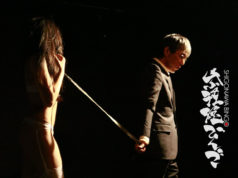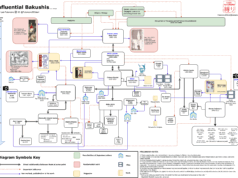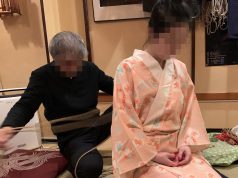The Spring Tiger Ryu was born from a simple conversation I had with Master “K” in 2013 about how ordinary Japanese objects are integrated into traditional Kinbaku. Suddenly, we found ourselves brainstorming ideas for what soon soon became the modest but well received MODular Kinbaku classes.
By combining historic, artistic, and practical information with hands-on practice time in an intimate venue we were able to show, through classes involving bamboo, wax, furniture, etc., a variety of ways that simple everyday things can elevate the beauty and sophistication of the art of Kinbaku.
Just as the first STR MODular Kinbaku semester ended, events aligned in a way that enabled us to solidify the Spring Tiger Ryu mission and we became even more dedicated to raising awareness of, and nurturing interest in, the art, history, beauty, and safety of Kinbaku – through classes, creative salons, and similar cultural events.
It all started when the well known bakushi, Akira Naka and his beautiful partner Iroha, arrived in Los Angeles, to give a special performance that kicked off a weekend of smaller formatted classes. From the moment they walked into the space there was awed silence. And then they began their “dance.”
Understandably, cameras were strictly forbidden. By lucky coincidence I had my iPad and the smarter of my muses whispered for me to grab the stylus (sometimes it pays to listen to the muse). Naka san seemed to move in slow motion, effortlessly gliding through space with Iroha. Yet, my hands could not move fast enough to capture more than the vague essence of their performance. It was (in every sense of the word) awesome.
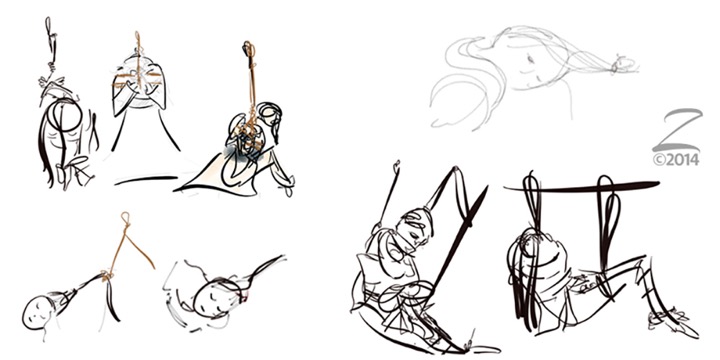
Soon after that amazing weekend, Master “K” and I were discussing Kinbaku “event” formats and I was reminded how traditional ‘satsuei kai’ (photography events) were conducted. Instantly we knew what the next Spring Tiger Ryu outreach event would be! Thus, the Spring Tiger Ryu Kinbaku Life Drawing Salon was formed.
Master “K” and I went into this with an attitude of, “Let’s toss it out there and see if there is any interest.” To our surprise we not only sold out the first salon, but were unable to accommodate everyone interested. Those who did attend were exposed to an experience very different from what (I’m sure) they expected.
Traditional life drawing formats encourage artists to choose a seat, and then a nude model strikes a series of poses lasting 10 to 30 minutes over 2-4 hours. Artists “rough in” (her for the purpose of this article) basic form, capturing perspective, proportion, and negative space, then focus on how light and shadow forms her body. Artists can often complete a piece during a longer pose.
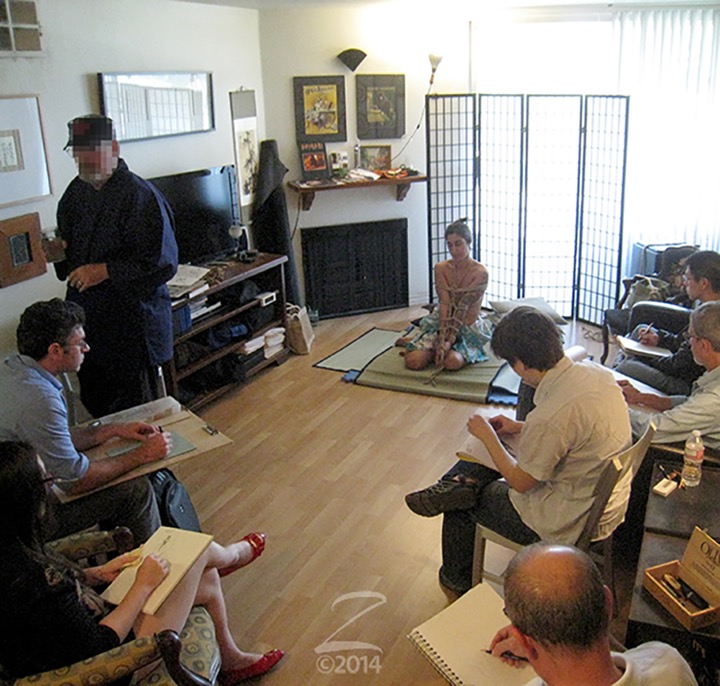
Our Kinbaku Life Drawing Salon was based on a traditional Japanese format; held in a modest sized private residence with one bakushi tying one model in one area of the room, the artists grouped around her. As artists arrived, each chose places and comfortably chatted.
To begin Master “K” offered a brief introduction on the art and history of Kinbaku illustration providing beautiful art history examples from his private collection. Ink sketches, paintings and a few photo-realistic pieces were offered, as well as a peek at the gestural markings I’d captured at the Naka performance.
Questions arose offering Master “K” the opportunity to emphasize how the beauty and art history has evolved, elevating the erotic and artistic nature of Kinbaku. Already it was turning into a special afternoon as Master “K” turned to pick up his rope.
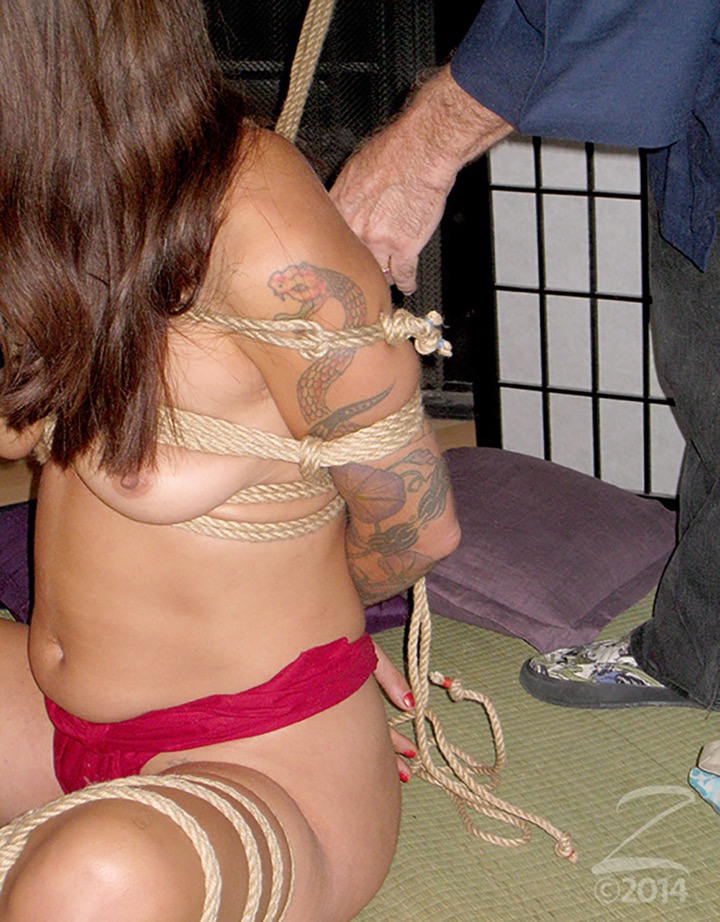
A few minutes of warm-up poses flowed into several longer poses with Master “K” and I encouraging the artists to sketch the process, and like my experience with Naka san and Iroha san, the artists soon realized the challenge that lay before them. The sound of a quiet room – but for the rope on the mat, the sighs of our model and the frantic sounds of pens and charcoals on paper – are ones I wish I could have captured.
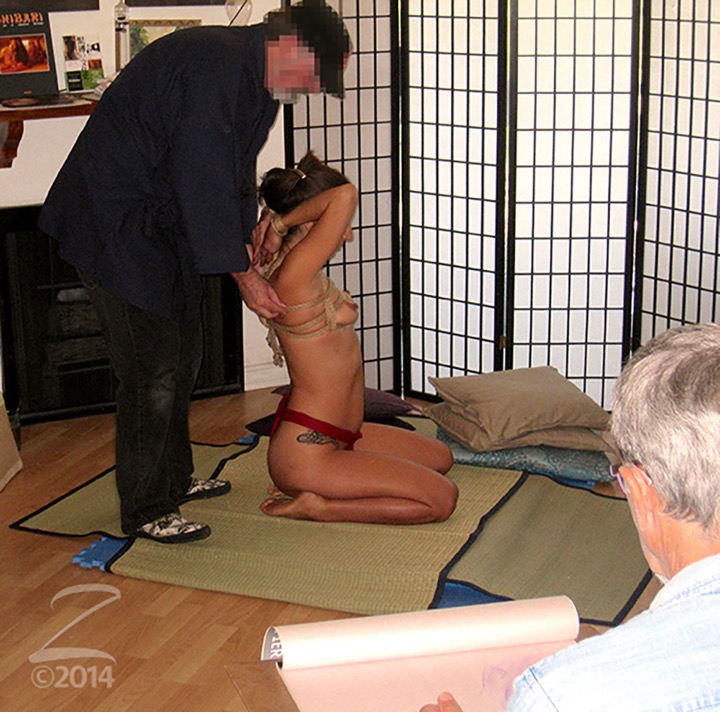
In traditional Japanese style, and with some trepidation, the artists rotated a chair to the left after each pose, proceeding clockwise through the poses, enabling each artist to sketch various perspectives over the course of the afternoon.
By sheer coincidence, our model (the beautiful ‘DevotedDarling’) happens to be an accomplished life drawing model and an exceptional rope bottom; she was tied by Master “K” in six progressively stringent Kinbaku poses in just over three hours. I have witnessed models ready to topple after a few ties but her poise and stillness combined with the radiance of the rope on her skin gave the artists a great deal to work with — and just enough time to do it.
Artists are accustomed to and comfortable with nudes, erotica and the history of art in other cultures but on this day Master “K” chose a progression of poses that opened to the artists a new understanding of the beauty and sophistication of traditional Kinbaku and challenged their perception of bondage while having to grapple with new concepts of rotating perspective, shorter draw times and how to convey the model’s emotions.
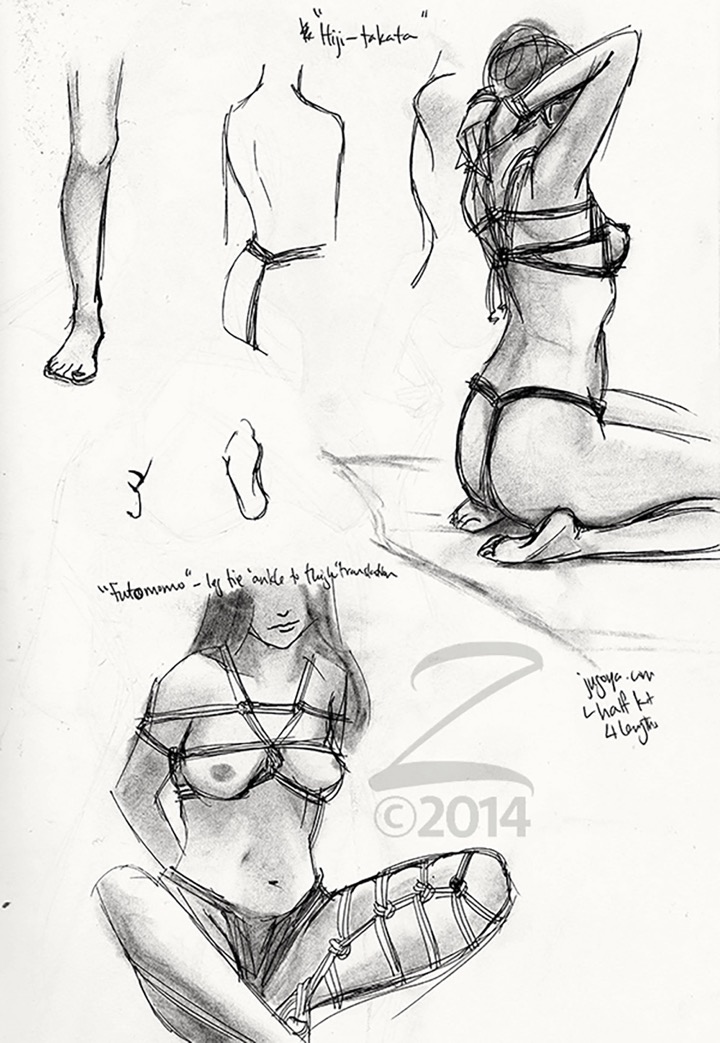
Master “K” and I were not sure what to expect from the day or the artists but the caliber of sketches produced were nothing short of extraordinary.
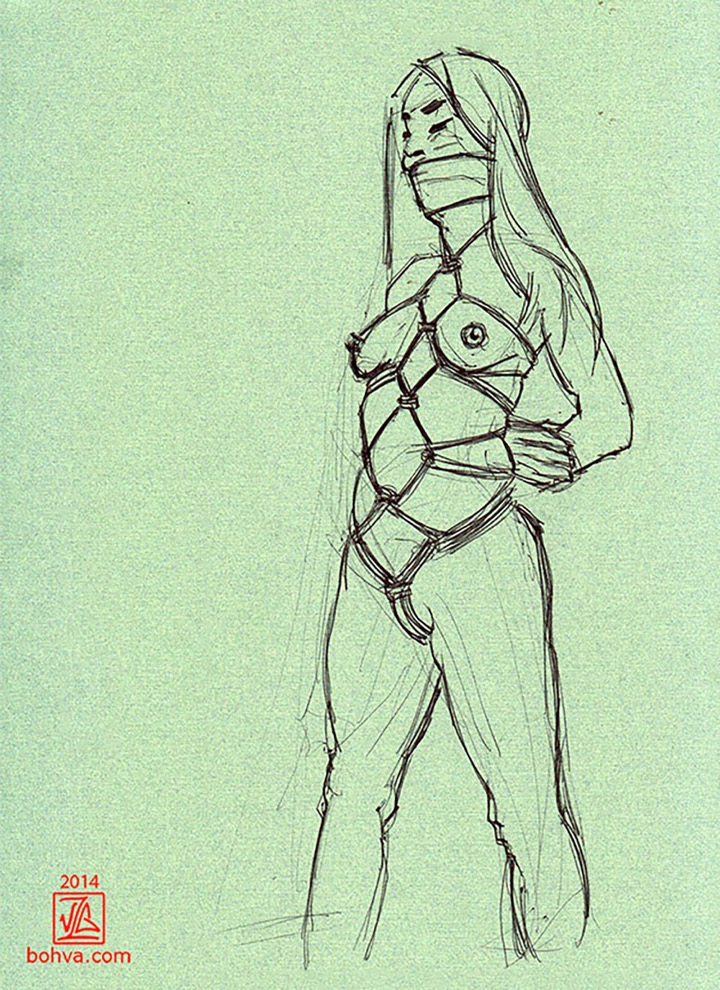
After fielding questions and promising to hold another life drawing session as soon as possible, artists, model, bakushi and I went our separate ways elated and exhausted. Honestly, both Master “K” and I were humbled and awed with the success of the entire day!
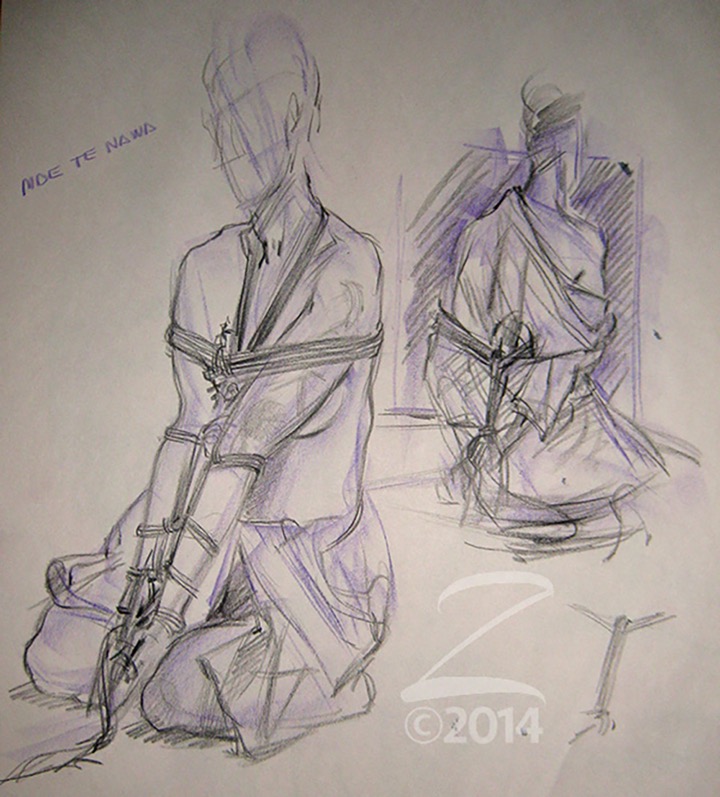
I would like to offer a great big thank you to DevotedDarling, for her patience and stamina, to the artists who attended and remained flexible with an unfamiliar process and subject matter. And most of all to Master “K” for sharing his art in such an amazing setting, graciously answering the many questions the artists eagerly peppered him with — all while keeping our model safe, happy, and comfortable.
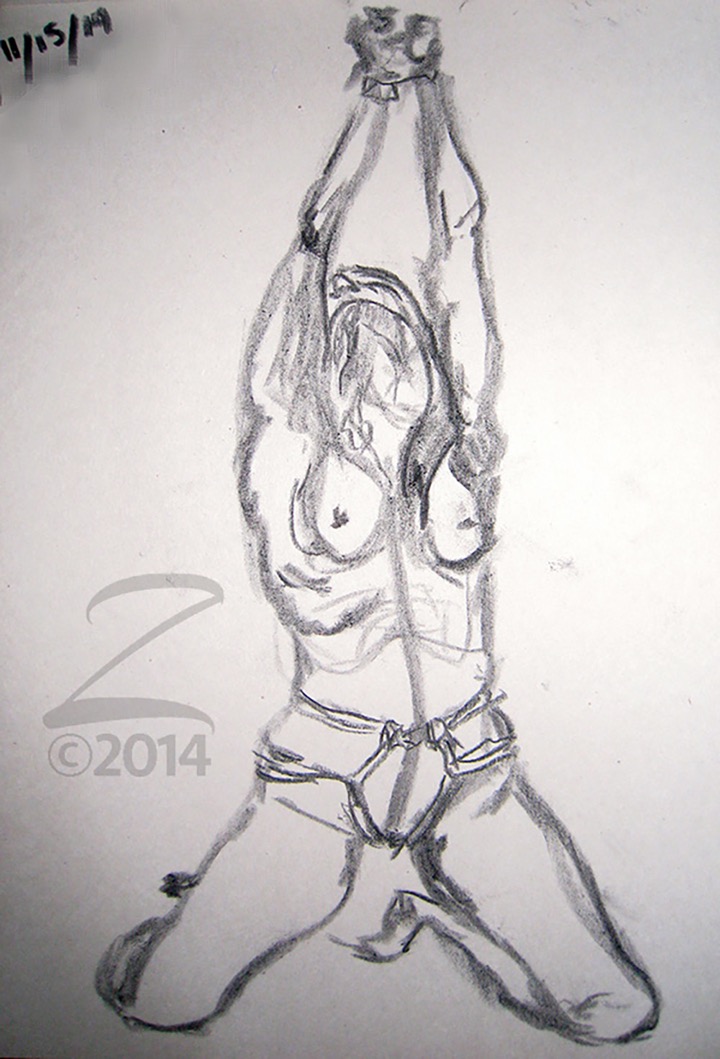
Just as I was ready to submit this, I received the following note:
“This was by far one of the most intellectually stimulating drawing events I have ever participated in. Master K’s demonstration of rope knowledge and skill at presenting ascetic, artful, and challenging poses was remarkable. This experience was like being in Japan. The location was very central and extremely private, every opportunity to feel welcomed and appreciated was afforded to all those who attended. I would love this to continue to grow into something truly remarkable!”
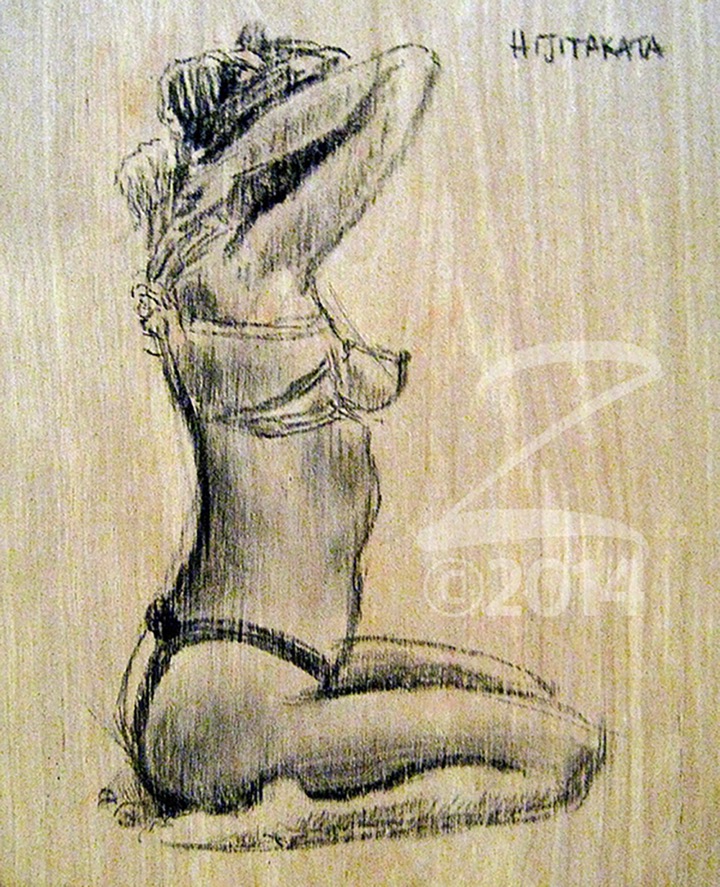
With the exception of the Salon day photographs and the three sketches from the Akira Naka event I do not own the rights to any images. The use of the ©2014 z_Element mark on each image is for the purpose of protecting each of the artists rights for this article only. For more information about the Spring Tiger Ryu events please visit www.springtigerryu.com for information about z_element or Master “K” please contact [email protected].


